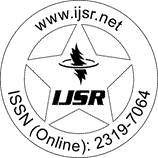Downloads: 129
Research Paper | Environmental Engineering | Tunisia | Volume 6 Issue 11, November 2017
Oxidized Vegetable Sponge (Luffacylindrica) as a Reusable Novel Heavy Metal Ions Adsorbent
Aloulou Fadhel | Sabrine Alila | Seffen Mongi
Abstract: The use of biomass as an adsorbent material is of great importance in the fields of water treatment, in fact the great abundance of luffa sponge on the earth, makes recourse to the industrialists to their exploitation because of the low cost, high abundance, easy availability and high adsorption capacity of the vegetable sponge (Luffa cylindrica). The ensuing luffa sponge, in the form of a rigid porous material, was characterized by FTIR and NMR and used as an adsorbent for the removal of heavy metals from aqueous solutions. It showed an efcient adsorption, exceeding 96 % toward Pb2+, Cd2+, Zn2+, Cu2+, Hg2+ and Ni2+ when their concentration was lower than 10 ppm and ranged from 90 % to 60 % for a metal concentration higher than10 ppm. Over 98 % of the adsorbed metal ion was recovered using EDTA as a desorbing solution, and the subsequent washing allowed the luffa sponge to be reused repeatedly without noticeable loss of adsorption capacity. It was concluded that the Luffa sponge oxidized may be used as a high capacity and reusable sorbent material in heavy-metal removing processes.
Keywords: Green Chemistry, Heavy Metal, Fibers, Cellulose, Adsorption
Edition: Volume 6 Issue 11, November 2017,
Pages: 1522 - 1533
Similar Articles with Keyword 'Heavy Metal'
Downloads: 2 | Weekly Hits: ⮙1 | Monthly Hits: ⮙1
Research Paper, Environmental Engineering, India, Volume 10 Issue 9, September 2021
Pages: 735 - 738Outlet Water from Air - Condition or Refrigeration would be Pure Habitable Water after Simple Filtration - No Presence of Microbes or Existence of Harmful Minerals
Shyamsundar Kar | Anirudha Mukherjee
Downloads: 5 | Weekly Hits: ⮙1 | Monthly Hits: ⮙2
Research Paper, Environmental Engineering, Pakistan, Volume 11 Issue 9, September 2022
Pages: 1054 - 1061To Quantify the Heavy Metals Uptake from Soil using Phytoremediation Process for Different Contaminant Concentrations
Waqas Umar
